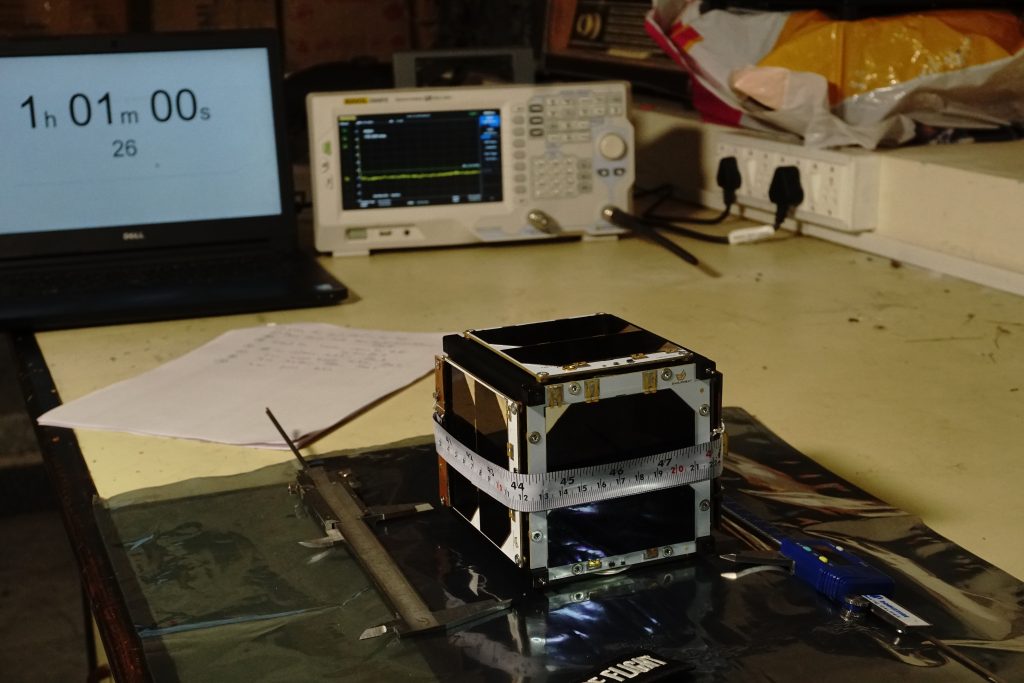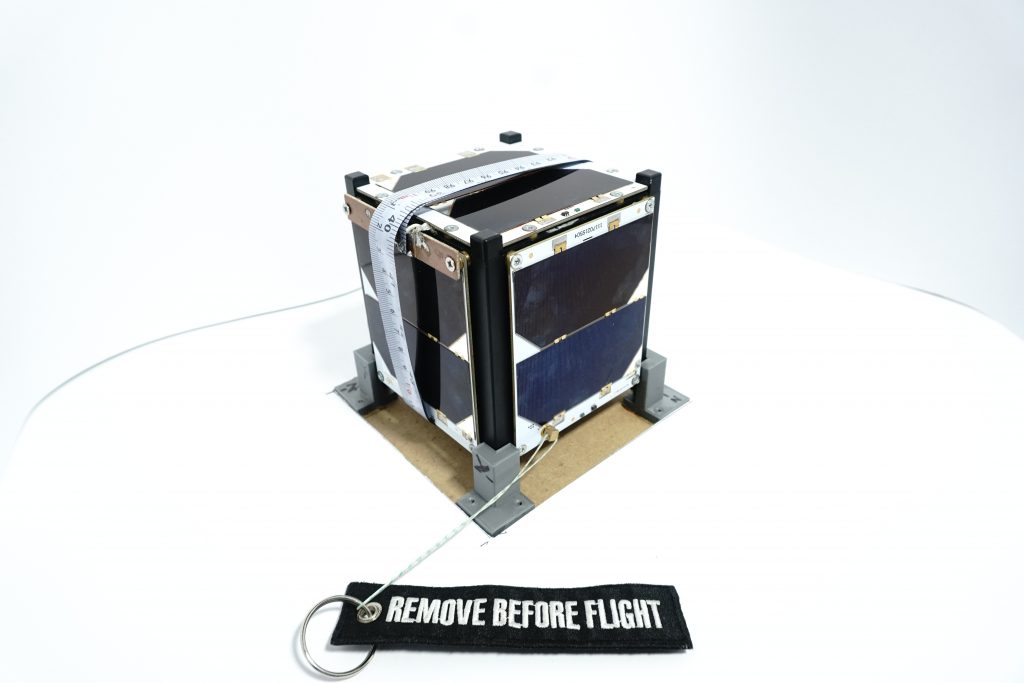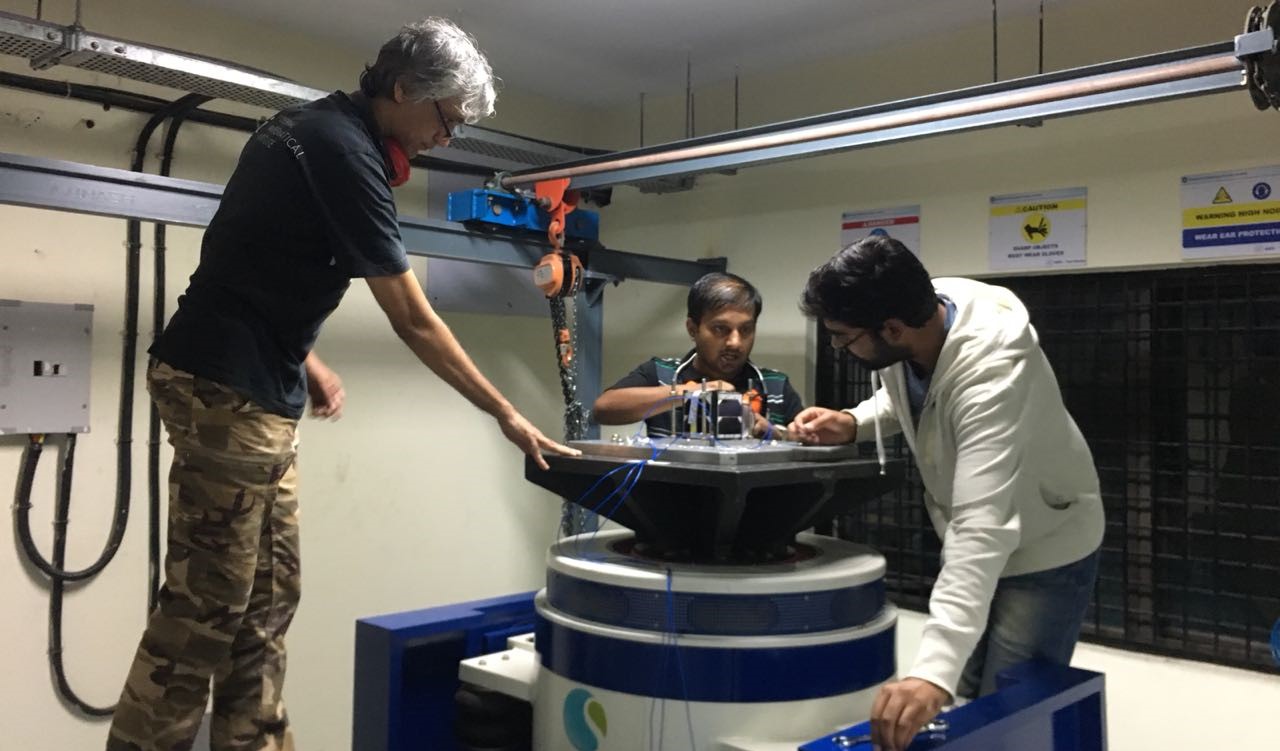
Exseed Sat-1 was built from scratch within 4 months. This makes for very affordable space missions.
Companies, countries and organizations that could never think of owning a space mission earlier can now profitably plan for useful, cost-effective space solutions to their challenges.
10 years ago, a satellite of Exseed Sat-1’s complexity would have weighed 100 kilograms and cost about $100 million. Today, Exseed Sat-1 weighs just under a kilogram and costs under $500,000.
Two things make this possible. The first is smarter electronics: Over the last decade, electronics have really become small and have begun to work on just a whisker of power. Second, competition between launch providers. ISRO, SpaceX and a host of new generation launch providers have made space missions very affordable.
Exseed Sat-1 extends the range of ordinary amateur radio walkie-talkies to hundreds of kilometres. This can be a game changer for everyone from Everest climbers to sailors to defence folks, to tracking small boats in the middle of the ocean.
Unlike big, large satellites that hover over fixed spots typically 36,000 kilometres above the earth, Exseed Sat-1 flies close to the planet, at about 600 kilometers above the surface, at 8 kilometers per second. That’s quite fast, actually – 28,800 kilometres per hour. This means it can fly from New York over the North Pole to Hyderabad in less than an hour. It flies in what’s called a polar orbit.
5 minutes of science.
There are no phone chargers in space. You need solar cells to generate power. Near earth, a solar cell that is 1 square centimetre receives about 1/10th of a watt of power. The best of them convert only 30% of this into electricity.

Our satellite is a cube of 10 centimetres, and not all of it can be covered with solar cells, so we get about 2 watts of power from each face. As the sunlight can fall only on one or two faces and rarely on three faces of the cube at any time, we generate an average about 2.8 watts of power.
This is used to run the on-board electronics as well as charge the batteries. The batteries are needed because there’s sunlight for less than half the time the satellite is in orbit. The electronics, radios and sensors need power even when the satellite is on the dark side.
This entire system of constantly harvesting power and keeping the systems running is called the Electrical Power System (the EPS). Our EPS contains the kind of batteries that are used in cell phones: small, flat Lithium Polymer batteries. These have to be extensively tested to withstand the rigors of space – and they have to charge and discharge 16 times a day, for years.
With the power up and running, an on-board computer (OBC) does all the house-keeping. There are temperature extremes: the sun can heat up the solar panels up to 100 degrees celsius on one side and then as Exseed Sat-1 tumbles into the darkness, they can quickly dip to -60 degrees.
The batteries need to be warm to continue to work. Heaters have to switch on and off at pre-set times and data points about voltages and currents from various panels and modules have to be collected and sent back home, while commands sent back have to be executed.
One challenge we’ve worried about in terms of keeping the OBC going is that some random cosmic ray from a distant star can rip through the CPU and turn it to mush. So we had to write the OBC software in such a way that it can quickly reset itself and resume operations when this ever happens. Fun fact: our OBC was built around an Arduino purchased at a hobby shop in Koti, Hyderabad.
The mission has a very sensitive radio to pick up the ground signals and either relay them back or interpret them as commands. It needs two antennas: one to listen to incoming radio signals from 600 km away and the other to transmit signals back to earth. And these antennae can’t interfere with each other, even when they’re right next to each other in a tiny box. These radios were entirely developed and tested in collaboration with HF Signals in Hyderabad.
Fishing lines, traditional jewellers and measuring tapes in space.
One interesting bit of frugal engineering: We wanted an antenna that could deploy quickly and reliably in space and we tested a large number of different materials. George Phillips, who headed the Structural team, finally figured that the lowly carpenter’s measuring tape commonly used around the house did a better job than materials that cost 400 times as much.

The tape is restrained by a fishing line that loops around a resistor. The Arduino on the OBC switches a very high current through the resistor, heats it up and melts the fishing line that releases the antenna. Watch the video:
We also needed pure silver wires to use as inductors on the mission. We found a traditional jeweller from Abids, Hyderabad, Azhar Jawaharat-ul Osman and his karigars (handicraft workers) who helped us draw out the wires using their practised skill better than other sources we’d seen.
Astra Microwave, a defence and space contractor, a partner firm, provided the thermovac chamber to test the satellite in vacuum and varying temperatures.
Satellize works with a network of such small units that can collaboratively achieve space missions.
So what happens now?
SpaceX’s Falcon 9 will rise up from the Vandenberg air force base in California, about midnight at Indian time between Monday and Tuesday, specifically around 00.02 hours on Dec 4, 2018.
As soon as it clears the thicker air in the lower atmosphere, it will start tilting towards north and follow its projected trajectory towards the North Pole.
As soon as the final stage of the Falcon 9 reaches the required orbit, one by one, all the satellites on the launch vehicle will be ejected. Our Exseed Sat-1 is sitting right next a satellite Fox 1E built by our friends at Amsat North America. Both will be ejected simultaneously.
As the satellite ejects from the faring, it’s kill switches that were pressed until now get released and the satellite will come alive.
Then we wait for 45 minutes for the other fellow satellites to drift apart before the OBC commands the antenna to be released.
Then our ears on earth perk up for it.
As it orbits around the earth, every minute it will whistle out the letter ‘V’ in Morse code (remember Beethoven’s 5th symphony? Yes, those notes).
This will be followed by telemetry in radio teletype format.
Every movie has credits – satellites deserve theirs, too.
Here are the folks that made Exseed Sat-1 happen:
Radio Electronics:
Ashhar Farhan, VU2ESE, Team Lead
Sasi Bhusan, VU3ELR
Gurudutta Panda, VU3GDP
OBC:
Ashhar Farhan, VU2ESE, Team lead
Gurudutta Panda VU3ELR
EPS, Solar Panels:
Gurudutta Panda, VU3GDP, Team lead
Ashhar Farhan, VU2ESE
Testing:
Sasi Bhusan, VU3ELR, Team lead
Ashhar Farhan, VU2ESE
Thomas George, VU3UGT,
Sanjay Nekkanti, VU3ISS
Sujatha Ramni
Sanket Daundkar
Integration:
George Phillips, VU2GT, Team lead
Gurudutta Panda, VU3GDP
Ashhar Farhan, VU2ESE
Mission Manager:
Sujatha Ramni
IARU Frequency Coordination:
Nitin Mutin, VU3TYG
Technical consultant:
Dr. M. Krishnaswamy, Ex-ISRO
Photography:
Rajaa Farhan
Gurudutta Panda, VU3GDP
Partners:
Amsat India
HF Signals Pvt Ltd
Astra Microwaves Ltd
SSPL Pvt Ltd
GroundCloud BV, Netherlands
Spaceflight Inc, USA
Jawaharatul Osman
Modern Electronics, Hyderabad
Roland Electronics, Hyderabad

